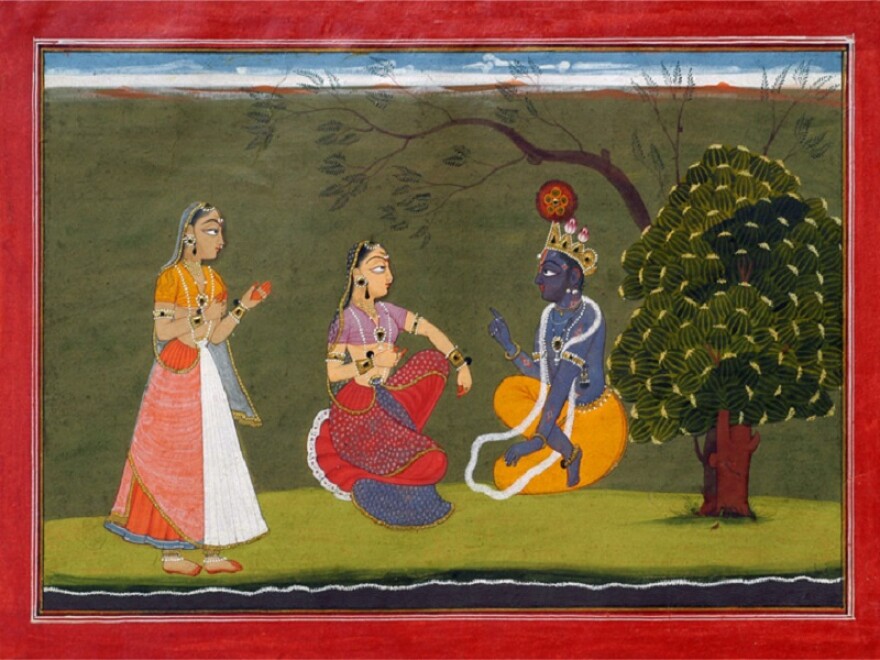In Hinduism, Krishna, the god of compassion, tenderness and love, is the eighth avatar or incarnation of Vishnu. In art, Krishna is usually depicted with a flute in his hand; his music calling devotees to him. In many of these paintings and sculptures, Krishna stands side by side with Radha, the supreme goddess. These two are linked by divine love and together represent feminine and masculine aspects of God. This picture, this tale of supreme love, comes to us from the work of a 12th century poet and composer, Jayadeva and his epic work Gita Govinda.
Loading...
It is a matter of hot debate as to where Jayadeva was born, it was somewhere in eastern India. Most of the information about his life is a matter of legend, told long after his death. What is interesting is how Jayadeva describes himself. There is no false modesty as Jayadeva declares that he is a kavi, a master poet, “in perfect tune with Krishna.” Usually the role of kavi was reserved for the upper class, the Brahmins. These intellectual priests devoted their lives to the study of Hindu texts, art, grammar, poetics, erotics and languages.
Legend states that the uber-talented Jayadeva abandoned his studies and all fleshly pursuits to become a wandering ascetic, abstaining from all forms of pleasure and indulgence. That is until he was convinced to marry a dancer from Puri. It was her love and her art that brought him back to a worldly existence and inspired him to write his masterwork about divine love, a “rite of spring” between Krishna and Radha. Jayadeva wrote while his wife danced. They may have even taken the show on the road, traveling south and performing a version of the Gita Govinda across India. This work is now an important text in various branches of Hinduism and is often read and performed today. Jayadeva is the composer of several ancient hymns still used in Sikhism.
Classical Indian music is characterized by two important concepts, Raga and Tala. Raga literally translates as “coloring” and it describes the melodic mode of a piece of music, the notes. Tala means “to clap in time.” It is the rhythmic meter or the beat of the music. There are names for different ragas and talas and they can be combined in a multitude of ways. However, these concepts are realized through various, different musical systems throughout the sub-continent and they don’t always agree. Also, none of this is written down in formal notation. So these musical ideas have shifted and evolved over the centuries. Today, performers decide for themselves how to interpret the ancient songs of Jayadeva. This, to me, is a lovely thought; just as the Gita Govinda describes the newness of love and the fresh life of spring, so the music that accompanies these songs is fresh and new as each generation performs them.
Learn more about Jayadeva in Lewis Holmes’ book The Mystery of Music.
Timeline is an exploration into the development of Western music.





